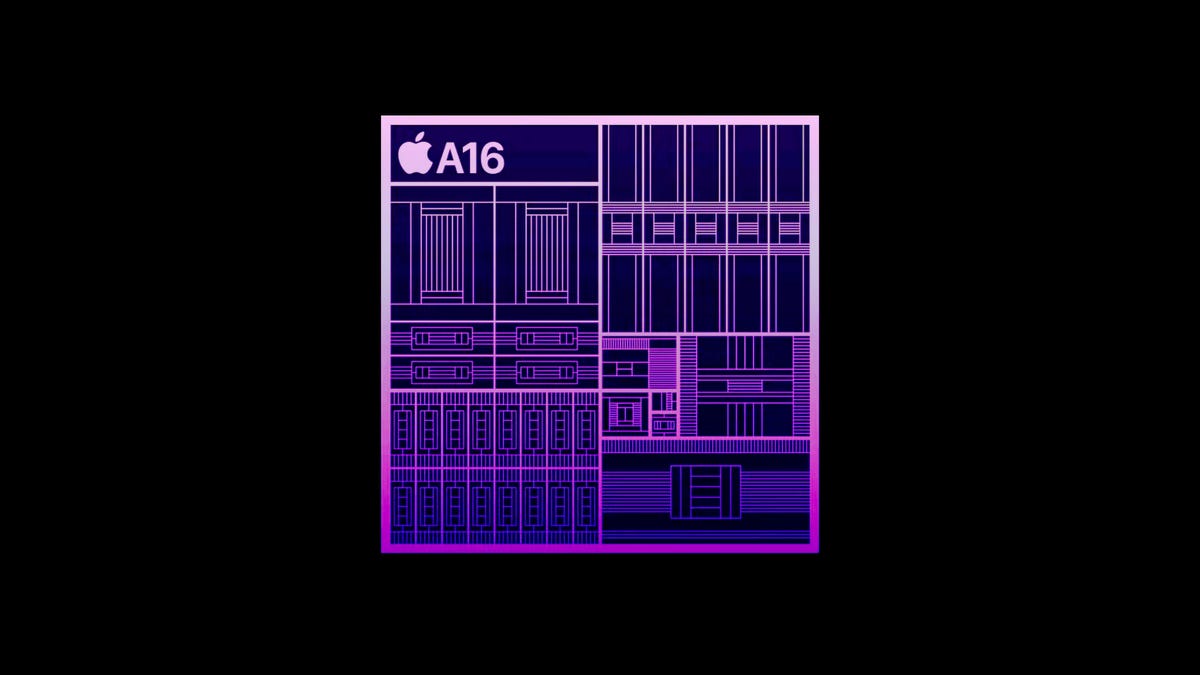iPhone 14 Pro's A16 Chip: Don't Expect a Major Speed Boost
Apple didn't specify how much faster the A16 is, compared with the A15.

The new iPhone 14 Pro series uses the new A16 Bionic processor.
Apple on Wednesday unveiled the A16 Bionic at its launch event for the iPhone 14, touting the 16 billion transistor processor as the highest performing ever for smartphones. But Apple didn't detail how much faster it is than last year's A15, and it's not likely to major a big speed boost.
The A16 Bionic, built on a 4-nanometer process, sports a faster design with six CPU cores -- the same combination of two powerful and four efficient cores Apple has used for years. Apple didn't say how much faster the A16's high-performance cores are compared with those on the A15, but they use 20% less power, which helps battery life. For the four efficiency cores, Apple didn't offer any comparisons to the A15.
"I think the A16 is very incremental over the A15," said Anshel Sag, an analyst at Moor Insights & Strategy. Instead of processor speed, Apple "focused explicitly on camera performance and battery life."
Without big manufacturing process improvements that shrink transistors, the core data processing circuitry on a chip, designers have a harder time adding features that increase the transistor total. That includes upgrades like more graphics processing units and accelerators for increasingly important artificial intelligence software.
With the A16, Apple's transistor count increased only modestly from 15 billion transistors on the A15. The A16 has "nearly 16 billion transistors," Apple marketing chief Greg Joswiak said. The A14 has 11.8 billion transistors, and the A13 has 8.5 billion transistors.
You may not notice new chip performance directly, but it's key to delivering new abilities, like the iPhone 14 Pro's advanced photo and video processing. The act of taking a photo exercises the A16's CPU, GPU, image processor and neural engine, cranking out up to 4 trillion operations per photo to deliver an image.
Unlike with previous iPhone generations, the A16 will only be available in Apple's higher-end iPhone 14 Pro and Pro Max models. The more mainstream iPhone 14 and 14 Plus will make do with the A15 chip that Apple debuted in 2021.
Apple didn't immediately respond to a request for comment.
A reported Geekbench test result shows modest performance gains overall. In single threaded tasks, which depend on the speed of an individual CPU core to do one important job, performance rose a significant 10% from a score of 1,707 on the iPhone 13 Pro to 1,879 on the iPhone 14 Pro, according to a test result spotted by MacRumors. But on multithreaded tasks, where a computing device is doing lots of jobs at the same time and uses more CPU cores, the score was virtually unchanged, rising from 4,659 to 4,664.
Geekbench doesn't reflect the better battery life that more efficient processors enable, however. And the iPhone scores remain head and shoulders above those of Android rivals.
Apple's Newest Releases
The A16's 16-core neural engine, designed to speed up AI work like computational photography or processing voice commands, can perform "nearly" 17 trillion operations per second, up from 15.8 trillion on the A15. The five-core GPU has 50% more memory bandwidth to better support graphic-intense games. The A16's new display engine allows for a 1Hz refresh rate for lower battery consumption, the always on display, higher peak brightness and smoother antialiasing for blending graphics.
The new chip is important both to Apple's ambitions and to iPhone owners. Apple's iPhone chips have maintained a significant performance lead over rivals, helping to ensure iPhones are fast not just for its customers but also for the developers who are crucial to bringing apps to the phones. The A-series line is now the foundation for Apple's M-series processors used to power its Macs.
Apple unveiled the new processor at its iPhone 14 launch event, a major moment on the annual technology calendar. The iPhone itself is an enormous business for Apple, but it's also a foundation of a huge technology ecosystem deeply embedded into millions of peoples' lives, including services like iCloud and Apple Arcade and accessories like AirPods and Apple Watches.
Still, the A16 also shows how hard it's become to make progress in the semiconductor business. Two years ago, Apple's A14 was early to the latest chipmaking technology, the 5-nanometer process from chip foundry Taiwan Semiconductor Manufacturing Co.
The A15 used the 5nm process too. And this year, the A16 uses a 4nm process -- not TSMC's newer 3nm process. The 3nm process offers better performance and miniaturizes circuitry so that more features can be crammed onto a processor, but is only now entering mass production, too late for the latest iPhone.
Qualcomm, the top chipmaker for the Android smartphones, acquired startup Nuvia in an attempt to give its processors a big speed boost. However, chip design firm Arm, which licenses processor technology to Apple, Qualcomm and many others, sued Qualcomm in August, saying Qualcomm tried to transfer Nuvia's technology licenses without Arm's consent.



